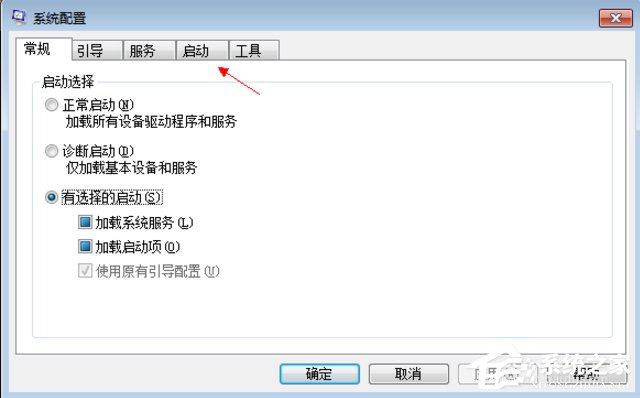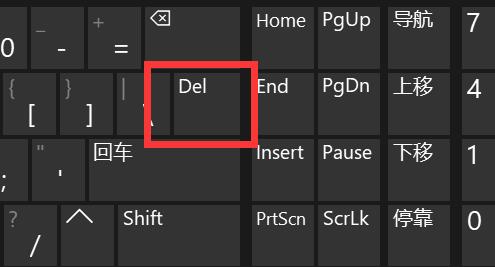
How to use ddr3 memory function on Gigabyte motherboard
1. The USB port power-off setting after shutdown is in the BIOS - Power Management (power saving function setting). One of them: ErP. Set it to: Enabled.
2. First, you need to enter the BIOS. After pressing the power button, keep pressing the DEL key on the keyboard to enter the BIOS. After entering the GIGABYTE BIOS interface, first switch to the system menu and set the language to Chinese. It will be convenient for us to operate later. Return to the "M.I.T" menu and select Advanced Memory Settings.
3. It is not recommended to use overclocking for a long time. If you just like it as a hobby, I have tested this U with 445 open core. A good person can overclock to 8G to 4G under air cooling, but you need to set the voltage. Generally it exceeds 35V.
4. Turn on the XMP function, which means turning on the normal function of the memory stick. It is equivalent to setting the memory overclocking, but it will not affect the service life of the memory. It just makes the memory stick work at the normal working frequency.
5. These options usually do not appear in Gigabyte's board BIOS. To adjust the memory frequency, delay, CPU FSB, multiplier, PCI-E frequency, etc., you need to press "ctrl F1" in the BIOS interface. The relevant settings appear. But don't set it randomly. If you increase it too much, you won't be able to turn it on. .
Gigabyte motherboard bios overclocking setting method
Step one: Turn on the computer, press the Delete key when entering the startup screen to enter the computer's bios menu, and then select the third line on the left Advance BIOS Feature menu, enter the Advance menu.
The Gigabyte motherboard overclocking setting method is as follows: First, you need to enter the BIOS. After pressing the power button, continue to press the DEL key on the keyboard to enter the BIOS. As shown in the figure, after entering the GIGABYTE BIOS interface, in order to make the content more understandable, first switch to the system menu and set the language to Chinese.
First enter the motherboard BIOS and turn off the CPU energy-saving options, as shown in the figure below; adjust the core voltage of the processor, as shown in the figure below; modify the processor multiplier to achieve overclocking effects, as shown in the figure below; CPU- Z detects the processor status weight, as shown in the figure below; the check is successful, as shown in the figure below.
Turn on the computer and press DEL on the Gigabyte motherboard z77x or ud3h to enter the BIOS settings. Use i72600k to press the ESC key, a prompt box will pop up, select Advanced, Mode to enter the advanced mode. Enter the advanced mode main interface, enter the Ai, Tweaker submenu, and change the Internal, PLL, and Overvoltage options to automatically turn on by default.
You can change various voltage settings by yourself. After selecting the default file, we can also enter the power options to view the voltage value.
After adjusting, F10 saves and restarts. 05 When overclocking, remember to adjust slowly. Leave the multiplier unchanged first, adjust the FSB slightly, enter the system to see if it is stable, and then enter the BIOS to adjust the multiplier. 06 Pay attention to the CPU temperature, it must not be too high. If a black screen or blue screen appears, quickly enter the BIOS recovery settings.
GIGABYTE motherboard bios overclocking setting diagram
The overclocking setting method for Gigabyte motherboard is as follows: First, you need to enter the BIOS. After pressing the power button, keep pressing the DEL key on the keyboard to enter the BIOS. As shown in the figure, after entering the GIGABYTE BIOS interface, in order to make the content more understandable, first switch to the system menu and set the language to Chinese.
First enter the motherboard BIOS and turn off the CPU energy-saving option, as shown in the figure below; adjust the core voltage of the processor, as shown in the figure below; modify the processor frequency multiplier to achieve overclocking effect, as shown in the figure below; CPU- Z detects the processor status weight, as shown in the figure below; the check is successful, as shown in the figure below.
Overclocking files are preset in CPUUpgrade. In order to facilitate overclocking operations for non-high-end users, in the CPU Upgrade in M.I.T., GIGABYTE provides you with CPU overclocking preset files. There are three files for i7-5960X5930K5820K, which correspond to 8GHz0GHz3GHz.
Enter BIOS settings. When the computer has just started, the screen shown in Figure 1 below appears. Gigabyte motherboard bios settings When the screen shown in Figure 1 appears, press the Delete (or Del) key and hold it down until you enter the BIOS (Basic Input Output System) settings, as shown in Figure 2. Gigabyte motherboard bios settings The picture above is the main menu of AWARD BIOS settings.
Turn on the computer and press DEL on the Gigabyte motherboard z77x or ud3h to enter the BIOS settings. Use i72600k to press the ESC key, a prompt box will pop up, select Advanced, Mode to enter the advanced mode. Enter the advanced mode main interface, enter the Ai, Tweaker submenu, and change the Internal, PLL, and Overvoltage options to automatically turn on by default.
Please note that some old motherboards do not support booting from CD-ROM, while newer motherboards now add more boot sequences such as LS120, ZIP, etc. (8) Swap Floppy Drive: The default setting is Disable. When it is Disabled, the BIOS treats the floppy drive connected to the floppy drive cable twist terminal as the first drive.
Gigabyte b660 Set the memory frequency to 3200
First enter the MSI BIOS interface, click on the overclocking OC option, enter the OC option interface, and click on advanced memory settings. Enter the menu memory frequency and click to automatically start XMP mode. This is the memory capacity and you can choose to expand it. Next, adjust Performance Enhancement Mode to enabled and adjust the memory frequency.
Can. In GEAR1 mode (that is, the memory controller frequency is the same as the memory frequency), it can only support up to DDR4 3200.
First, press DEL when booting to enter BIOS, and press F7 to enter advanced mode. Secondly, find the memory frequency, select 3200, and press F10 to save and exit.
Select (enable) in MB Intelligent Tweaker-CPU Host Clock Control in bios and CPU Host Frequency will appear. You enter the FSB of the CPU.
How to adjust the memory frequency of Gigabyte b460 motherboard
1. Adjust the memory frequency and CPU FSB, and then adjust the frequency to 12. Make the memory frequency displayed on the computer be DDR3-1600. Then set the frequency of Gigabyte b660 to 3200. The above is how to set the memory frequency of Gigabyte b660 to 3200.
2. First, you need to enter the BIOS. After pressing the power button, press the DEL key on the keyboard to enter the BIOS. After entering the GIGABYTE BIOS interface, in order to make the content easier to understand, first switch to the system menu and set the language to Chinese. Then choose to return to the "M.I.T" menu and select Memory Advanced Settings.
3. How to set the memory frequency in Gigabyte motherboard bios: After entering the BIOS, select the second advanced frequency setting. This setting can not only adjust the memory frequency, but also adjust the processor.
4. Set the memory frequency in Gigabyte motherboard bios: First, you need to enter the BIOS. After pressing the power button, keep pressing the DEL key on the keyboard to enter the BIOS. As shown in the picture: After entering the GIGABYTE BIOS interface, in order to make the content more understandable, first switch to the system menu and set the language to Chinese.
5. Host Frequency, you can modify the CPU's FSB; return to the MB Intelligent Tweaker panel; enter MB Intelligent Tweaker; find System Memory Multiplier; where you can select the multiple relationship between the memory frequency and the CPU frequency. , so that the memory frequency can be modified.
How to adjust the frequency of the memory module on Gigabyte h410 motherboard
1. First, you need to enter the BIOS. After pressing the power button, keep pressing the DEL key on the keyboard to enter the BIOS. After entering the GIGABYTE BIOS interface, in order to make the content more understandable, first switch to the system menu and set the language to Chinese. Return to the "M.I.T" menu and select Advanced Memory Settings.
2. How to set the memory frequency in Gigabyte motherboard bios: After entering the BIOS, select the second advanced frequency setting. This setting can not only adjust the memory frequency, but also adjust the processor.
3. Gigabyte motherboard bios settings memory First, we enter the motherboard BIOS to set the memory frequency: Advanced Memory Settings menu We can go to the Advanced Memory Sitting on the motherboard BIOS. Make adjustments and open it as shown in the picture above.
4. Turn on the memory XMP option. I am using an XMP memory module. When we turn on the XMP option, we can see that the memory frequency has been increased from the original default 1333MHz to 1600MHz.
The above is the detailed content of Gigabyte motherboard setting memory frequency. For more information, please follow other related articles on the PHP Chinese website!
 微星主板bios安全启动怎么开启?Feb 01, 2024 am 09:21 AM
微星主板bios安全启动怎么开启?Feb 01, 2024 am 09:21 AM微星主板bios安全启动怎么开启?1.以华为matebookx、windows10为例。以Z390为例,重启按DEL进入BIOS,按F7进入高级模式,点击进入Settings的选项,再进入TrustedComputing。2.有个安全设备支持(SecurityDeviceSupport),将其改为允许(Enable),TPM设备选择为PTT,设置完成后按F10保存重启。3.以B550M为例,重启按DEL进BIOS后选择左侧的SETTINGS以进入设置界面,同样进入安全选项里的TrustedCom
 进入华硕主板bios设置图解教程Jul 08, 2023 pm 01:13 PM
进入华硕主板bios设置图解教程Jul 08, 2023 pm 01:13 PM有很多操作都是需要进到电脑的bios系统进行操作,比如说调整启动项,磁盘模式,cpu参数,刷新bios等等。不过不同的电脑品牌主板的bios设置等界面会有不同,那么如何进入华硕bios?华硕主板bios设置界面又是怎么样的呢?下面小编就给大家分享下进入华硕主板bios设置图解教程。一、如何进入华硕bios1、首先重启华硕电脑,在开机的一瞬间并跳出ASUS的标志界面的时候,马上不断按“Delete”键进入bios界面。2、进入到bios界面后,就可以对bios系统进行设置了。二、华硕主板bios设
 asus安装win7找不到引导启动菜单的解决方案Jul 17, 2023 am 10:37 AM
asus安装win7找不到引导启动菜单的解决方案Jul 17, 2023 am 10:37 AM在安装系统的过程中,许多网民可能会遇到一些问题,导致重新安装系统的失败。最近,一些网民报告说,他们的sus安装win7找不到引导启动菜单,安装后不能正常引导启动菜单进入新系统。下面的小边教你安装win7后找不到引导启动菜单的解决方案。asus安装win7找不到引导启动菜单的解决方案:1.进入华硕主板BIOS,F7进入高级设置。2.进入启动选项。3.修改CSM(兼容性支持模块)。打开CSM,完全支持非UEFI启动附加设备或WindowsUEFI模式。4.返回修改,修改安全启动菜单。5.修改其他操作
 win7怎样进去bios设置方式介绍Jul 11, 2023 pm 06:09 PM
win7怎样进去bios设置方式介绍Jul 11, 2023 pm 06:09 PMwin7怎样进去bios设置呢,用户应用win17的时候如果碰到要进入bios的现象要怎么办呢,最先开机后重启,随后等候系统发生黑底白字时按着del,根据这个方式用户就可以很容易进入bios中,在这儿用户能够设置许多作用,非常的容易且便捷哦,下面就是具体的win7怎样进去bios设置方式介绍。win7怎样进去bios设置1、最先打开电脑以后,点击左下方的菜单栏。2、点击菜单里的‘重启’。3、在重启时,直到显示屏发生黑背景,白字时,就会见到进入bios的方法了,这儿提醒要按照del键。4、不停的按
 如何进入华硕主板的BIOS设置界面?Jan 30, 2024 am 11:33 AM
如何进入华硕主板的BIOS设置界面?Jan 30, 2024 am 11:33 AM华硕主板开机怎么进入bios设置?步骤/方式1工具/原料:系统版本:windows7系统品牌型号:华硕无畏14开机的时候按下键盘中的“Del”快捷键步骤/方式2即可进入BIOS界面。华硕主板怎么进入bios?1.启动华硕笔记本2.开机的时候按下键盘中的“Del”快捷键即可进入bios设置3.进入bios的主界面华硕主板进bios?进入华硕主板的BIOS有多种方法,以下是其中的两种常见方法:方法一:打开计算机,当出现华硕主板的logo时,按下“删除”键,直到进入BIOS设置页面。在BIOS界面中,
 解决win11关机后外设仍然亮的问题Dec 26, 2023 pm 10:37 PM
解决win11关机后外设仍然亮的问题Dec 26, 2023 pm 10:37 PM有时候我们关机要睡觉了,结果win11关机后外设还亮着灯,非常影响体验,这其实是由于关机后usb接口还在供电导致的,我们只要进入bios设置禁用它就可以了。win11关机后外设还亮:1、首先我们重启电脑,在品牌logo跳出时按下“DEL”进入bios设置。(不同电脑进入bios的方法不一定一样,可以查一下说明书)2、进入后,我们先将语言改到中文,方便操作。3、接着我们进入“高级”设置,打开“高级电源管理”4、然后在其中找到“ErP支持”5、随后将它改为“开启(S4+S5)”6、最后按下键盘“F1
 如何更改BIOS设置以在Win7上安装XP系统Jan 05, 2024 am 08:42 AM
如何更改BIOS设置以在Win7上安装XP系统Jan 05, 2024 am 08:42 AM我们在使用win7操作系统的时候,有的小伙伴们因为一些需要想要把自己的系统换成xp操作系统。那么在这个过程中一些小伙伴们可能就遇到了一些问题。对于win7换xp系统bios怎么设置,小编觉得首先通快捷键进入我们电脑的bios,然后找到相关选项跟着小编进行设置即可。具体操作步骤一起来看下吧~win7换xp系统bios怎么设置1.进BIOSThinkPad和联想VBKEM系列的笔记本进BIOS是按键盘的F1键(部分机型是按键盘组合键Fn+F1,Fn键按住不放,反复按F1键)。2.选择Restart标
 惠普bios设置U盘启动的教程Jul 16, 2023 pm 02:21 PM
惠普bios设置U盘启动的教程Jul 16, 2023 pm 02:21 PM在使用惠普的用户却不少,很多人要进入快启动pe系统进行维护的时候却不知道该怎么设置U盘启动,主要是惠普bios设置U盘启动的方法和平常的方法略有不同,那么,惠普电脑如何U盘启动呢,下面我们来看看惠普bios设置U盘启动的教程,大家快来看看吧。1、首先,将u盘插入hp台式机的USB接口处。2、开机快速断续的按F10键进入BIOS设置界面。3、进入BIOS设置后,将界面切换到“Boot”选项,将光标移到“BootDevicePriority”选项按回车键进入。4、选择“HDDGroupBootPri


Hot AI Tools

Undresser.AI Undress
AI-powered app for creating realistic nude photos

AI Clothes Remover
Online AI tool for removing clothes from photos.

Undress AI Tool
Undress images for free

Clothoff.io
AI clothes remover

AI Hentai Generator
Generate AI Hentai for free.

Hot Article

Hot Tools

PhpStorm Mac version
The latest (2018.2.1) professional PHP integrated development tool

Safe Exam Browser
Safe Exam Browser is a secure browser environment for taking online exams securely. This software turns any computer into a secure workstation. It controls access to any utility and prevents students from using unauthorized resources.

SublimeText3 English version
Recommended: Win version, supports code prompts!

Dreamweaver CS6
Visual web development tools

SublimeText3 Mac version
God-level code editing software (SublimeText3)







